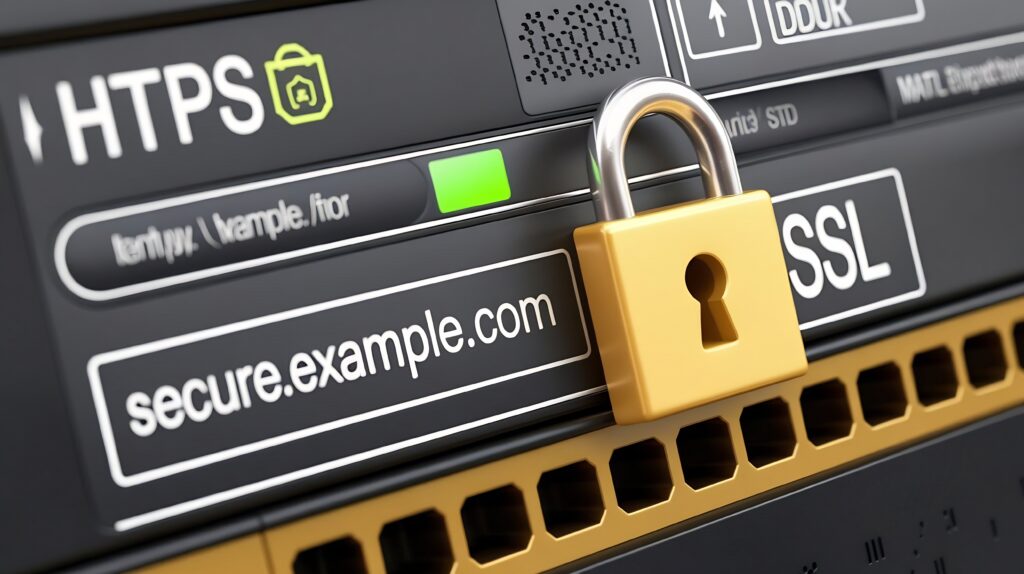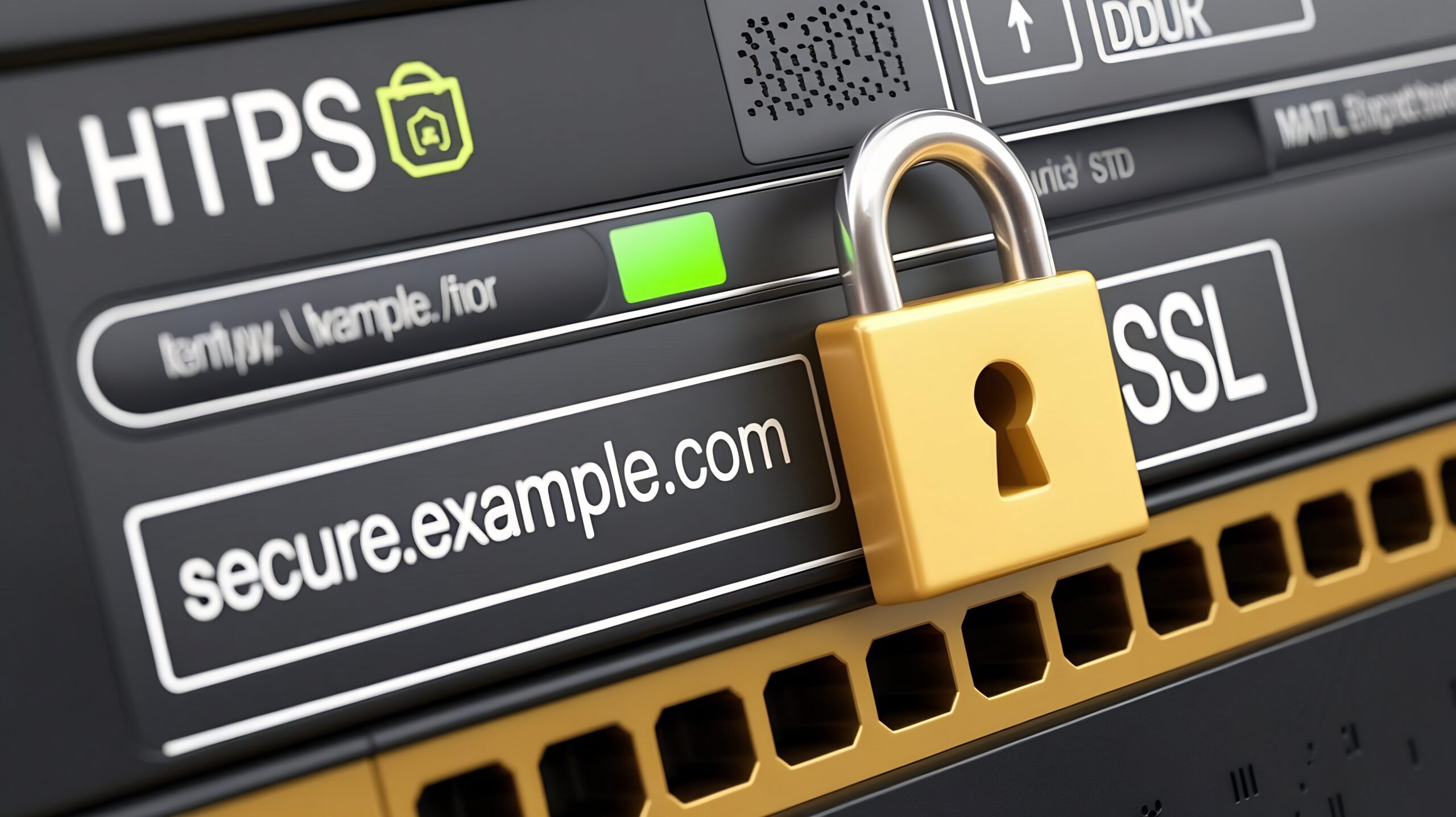Introduction: Why SSL Still Matters in 2025
Encryption by the year 2025 will become the only way to trust the internet. Browsers nowadays consider non-HTTPS websites as dangerous, and this gradually repels the visitors, thus the trust in the brand is lost. The padlock icon in the address bar is more than just a visual cue. It is the representation of a site’s credibility. Users trust it, search engines reward it. Without SSL protection, even a website with the best design might lose its credibility instantly.
Managing multiple domains for the company not only means good security but also the need to have SSL for the smooth running of the entire process. Every domain gets validated, renewed, and maintained, and if all that is done manually, it is like getting lost in a technical maze. At this point, the choice between a wildcard SSL certificate and a multi-domain wildcard SSL certificate becomes very important.
The Modern SSL Security Threat Landscape
The online threat environment in 2025 is the most intricate one ever. Cybercriminals have sharpened their skills in finding and taking advantage of even the smallest flaws in SSL implementation. Among the numerous illegal means by which such a situation arises, the biggest is using unsecured or misconfigured subdomains, which are often the point of gathering phishing campaigns that mimic trusted brands to trick users into revealing their personal data.
One more risky situation is management negligence of SSL, which might not be visible, but is still able to knock down the most advanced systems. One of the main problems is expired certificates, which users get sudden warnings for, and the confidence of the users in the website gets eroded while the website loses some of its traffic at the same time. Besides that, the use of old encryption protocols can result in lawful interception, where hackers put themselves in the middle of communication between users and websites.
Understanding Wildcard SSL Certificate Types
Wildcard SSL and Multi-domain Wildcard SSL presently stand out among the foremost types of SSL, which, though they encrypt sites easily, do it differently.
A. What Is a Wildcard SSL Certificate?
A Wildcard SSL Certificate allows a domain, along with its first-level subdomains, to be protected with a single certificate; likewise, the master key opens the whole hierarchy of your website. This is an amazing choice for SaaS, eCommerce, and companies with different services under one brand, as it makes the installation, renewal, and scaling processes very smooth.
B. What Is a Multi-domain Wildcard SSL Certificate?
On the other hand, the Multi-domain Wildcard SSL solution can have a single certificate that is accepted for totally different domains and their subdomains over a certain limit. This option is very suitable for digital agencies, companies, and hosting providers with many brands or client websites. It makes the SSL management easier, reduces the admin work, and provides the whole organization with strong security that covers not only the large digital network but also the very tiny parts.
Comparison Table:
| Feature | Wildcard SSL | Multi-Domain Wildcard SSL |
| Domains Covered | One | Multiple |
| Subdomains | Unlimited | Unlimited (per domain) |
| Cost | Lower | Higher |
| Best For | Single organization | Multi-brand or multi-client |
| Manual Effort | Simple | Moderate |
Step-by-Step Manual SSL Deployment
Step 1: Buy from a Reliable CA
While getting an SSL certificate, look up reputable Certificate Authorities like Sectigo, GlobalSign, and DigiCert, which are the best when it comes to browser validation and strong encryption.
Step 2: Create a CSR
Make use of your hosting panel or OpenSSL to generate a Certificate Signing Request. The CSR file, in fact, serves as the validation of your control over the domain and the organization.
Step 3: Execute Domain Validation
As part of the matter, the CA will request you to do a domain check, and you can perform it through DNS records or by email.
Step 4: SSL Certificate and CA Bundle Download
After the validation step is complete, get the SSL certificate and its CA bundle, which will create a secure link between your website and users’ browsers.
Step 5: Server or CDN Installation
The SSL files will go to your web server, control panel, or CDN while your hosting is configured for HTTPS.
Step 6: Installation Testing
Check whether the certificate is installed correctly, is secure, and trusted by performing tests on SSL Labs or SSL Checker and using all major web browsers.
Manual SSL Renewal and Monitoring
- Reissue the Certificate: When it is time to renew your certificate, go into the account of your Certificate Authority and reissue the certificate.
- Repeat Domain Validation: The first issuance of a new SSL certificate relies on the second validation of ownership, which can be accomplished through either DNS or email.
- Replace Old Files: The new SSL certificate files will be rolled out on all present servers or CDN, and the obsolete ones will be taken out.
- Track Certificates: A very basic spreadsheet is to be maintained for immediate reference, and it should contain the domain, issue date, expiry date, and installation location.
- Use Monitoring Tools: Continuously check your certificate’s status with ssl Checker or ssl Labs, and let Uptime Robot provide you with free reminders before expiration as a warning.
Server Hardening Tips That Are SSL Related
- The server should only support the most recent TLS version, such as TLS 1.2 and TLS 1.3, since they are safer and more compatible with browsers.
- The deactivation of SSLv2, SSLv3, and TLS 1.0/1.1 should be performed since those protocols are already considered insecure and are thus susceptible to attacks and downgrades.
- The server would be allowed to use only modern cipher suites, which ensure the security of past communications even if the session key is leaked.
- The site should be using HSTS, which basically forces browsers to connect via HTTPS, so there will be no accidental or forced downgrades to HTTP, which is insecure.
- Analyzing the SSL configuration regularly with tools like Hardenize or Qualys SSL Test, weaknesses will be identified, and thus, a high-security rating will be maintained.
More Comprehensive Security Best Practices
- Set the Correct File and Folder Permissions
- To make sure that system files are not that easy for unauthorized users to access or even change, the permission level of 644 for files and 755 for folders should be put into practice.
- To make sure that system files are not that easy for unauthorized users to access or even change, the permission level of 644 for files and 755 for folders should be put into practice.
- Disable Directory Indexing
- Indexing of directories should be turned off so that no one can go through your files or see your internal file structures.
- Indexing of directories should be turned off so that no one can go through your files or see your internal file structures.
- Secure HTTP Headers Implementation
- Protect such headers as Content-Security-Policy and X-XSS-Protection to lower the risk of cross-site scripting and other web-based attacks.
- Protect such headers as Content-Security-Policy and X-XSS-Protection to lower the risk of cross-site scripting and other web-based attacks.
- Basic Firewall Rules Activation
- Rely on the firewall protection that comes with your hosting company or partner with Cloudflare to prevent undesirable or harmful traffic from reaching your site.
- Rely on the firewall protection that comes with your hosting company or partner with Cloudflare to prevent undesirable or harmful traffic from reaching your site.
- Perform Software and Plugins Updates Regularly
- Always keep your website’s CMS, plugins, and server software up to date in order to secure the open areas and to be stronger against the ever-evolving threats.
Compliance Considerations
SSL for Regulatory Compliance: While ssl encryption is mainly meant to provide security, it’s also a requirement for compliance in most global regulations. Among the PCI standards, SSL is a must to guarantee online transactions and the safety of payment information. In the healthcare sector, HIPAA mandates the use of encryption to secure the transmission of protected health information.
Manual Certificate Tracking: If your SSL documents are current, they will not hinder but rather help compliance audits. A detailed inventory of all the certificates issued, their renewals, and validations not only serves as proof but also justifies all the encryption and data protection measures on your website.
SSL Compromise and Incident Response Plan
Identifying Signs of SSL Compromise
Compromise of the SSL certificate may be signaled in many different ways: you might get security warnings on your browsers, the certificates might be displayed as revoked, or data leaks that are not expected might occur.
Responding to a Compromise
- Revoke the Compromised Certificate: The SSL certificate, which is the subject of the compromise, has to be revoked with immediate effect to prevent its usage by unauthorized persons or further data loss.
- Generate a New CSR: To begin the reissuance process with new and secure keys, a new Certificate Signing Request needs to be created.
- Revalidate with the CA: The domain validation process through the Certificate Authority that validates your ownership of the domain needs to be done again.
- Reissue and Replace Certificates: All the servers, applications, and CDN configurations that are active must be replaced by the new SSL once it is issued, so that total protection can be restored.
- Log and Investigate the Incident: Keep a record of each and every activity performed, investigate the compromise completely, and train security to be more secure by implementing preventive measures.
Final Checklist and Manual Management Plan
The wildcard SSL certificate is the most recommended choice for securing a main domain and its entire subdomain ensemble. Besides that, it has the merit of being easy to manage and allows vertical scaling. The presence of SSL on a website that lacks any automated features still gives the site a layer of security as it provides trust, compliance, and data protection over all the company’s digital assets.
Checklist
- Document all the currently active domains and subdomains to be able to tell which ones need shielding.
- Obtain certificates solely from the most reliable Certificate Authorities to guarantee the credibility of the certificates.
- Produce a CSR and carry out the domain validation process to the letter.
- Conduct a manual installation and verification of the SSL certificates on all web servers and environments.
- Mark the renewal dates on the calendar to prevent expiration or browser notifications.
- Depend on trustworthy online services that will double-check your SSL configuration every quarter for uninterrupted defense.
FAQs
Q1: Is it possible to use a wildcard SSL certificate for more than one domain?
No, a wildcard SSL cert is good only for one domain and its subdomains. A multi-domain wildcard or separate certs are needed if you want to cover multiple domains.
Q2: Will I have to do the domain validation manually every time?
Yes, not unless the CA has that feature of cached validation. Re-validation through DNS or email will be required for every renewal.
Q3: How can I tell that my certificate is about to expire?
You can monitor it through the certificate details (browser or CA panel), or employ services like UptimeRobot, SSL Checker, or spreadsheets.
Q4: What is the consequence of forgetting to renew the certificate?
A warning saying “Not Secure” or “Connection Not Private” will be displayed by your site in browsers. It may lead to a drop in both traffic and trust.
Q5: Is it allowed to use one certificate on more than one server?
Yes. You have the option of using the same certificate and private key on more than one server (provided the certificate is for a matching domain/subdomain).
Conclusion
The manual certificate management environments are now completely in sync with this version, which offers real-time, detailed assistance to those users who like to have physical control over SSL. It presents the most effective practices for non-automated configurations, thus making sure that websites are still secure, trusted, and compliant even if advanced automation tools are not available.
The blog does not propose any complicated security measures but rather promotes clear, action-oriented ones that can be easily executed by the administrators, IT teams, and digital agencies that are handling multiple domains. It has also provided a longer FAQ section that aims at both answering the users’ questions around the subject and improving the visibility for the featured snippets and the SEO rankings.











